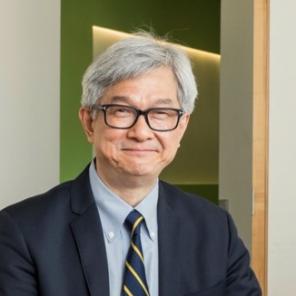
David T.W. Wong DMD, DMSc, is the Felix & Mildred Yip Distinguished Professor, Associate Dean of Research, and Director of the Oral/Head and Neck Oncology Research Center at University of California, Los Angeles. He served as the 39th President of the AADR, is an AADR Fellow and a Fellow of the American Association for the Advancement of Sciences (AAAS). He is current chair of the NCI Liquid Biopsy Consortium and chartered member and co-chair of the NIH CSR Cancer Biomarker Study Section (CBSS).
1. How did you first learn about AADR and what motivated you to join? What do you find to be the most valuable benefit of AADR membership?
My first AADR meeting was in 1982, in Los Angeles. I was a second-year dental student at the University of British Columbia, Canada, and joining AADR with a student membership was the default lab culture, as I was working in an Anatomy lab on palatal development. It was a defining moment for me, as the journey and engagement with AADR has never waned and is one that presents a scientific and professional path that is nurturing, exciting, supportive and positively reinforcing. It was a calling!
2. What is the best way for other members to become more involved in AADR?
Attend an AADR meeting, submit an abstract, submit a paper to JDR, join the National Student Research Group, participate in one of the 24 scientific groups, run for office, or be a mentor or a mentee. Take pride and be excited of the scholastic research that you do in dental, oral and craniofacial health. Research is from the heart, and AADR is the scholastic and academic stage that you stand on to disseminate, advocate and showcase your research and the amazing impact it can have.
3. You served as the 39th President of the AADR from 2010-11. What motivated you to run for office? How has this leadership experience within AADR shaped your career?
In academia, as a professor and principal investigator (PI), one serves as a role model and in many ways an iconic figure that students, colleagues and alike can look up to for inspiration. A role model is the defining figure where her/his presence, accomplishments and mentorship can spark the “calling” for a novice to take the first step in research training and career development to become an oral health researcher and/or dentist scientist.
There were three such defining moments in my career: First, it was college sophomore Organic Chemistry where Keith Slessor was the charismatic professor who had me in his lab for three summers synthesizing insect pheromones. Then it was at the start of my graduate/residency training at Harvard, when Robert Weinberg, Michael Bishop, Michael Wigler and Geoffrey Cooper simultaneously identified the first human oncogene (ha-RAS). The third defining moment in my career is when NIDCR planted salivary diagnostics in the scientific community in 2002. This has since been a field that I devoted my research to and the leadership experience within AADR has helped me, with my colleagues, to advocate and advance this exciting field forward. Being an AADR president was a privilege that anchored and affirmed my belief that dental research can advance and impact medical practices and address unmet clinical needs.
Make advancing research your personal axiom. Invest in it; it will bear fruit, be it earliest detection of cancer; craniofacial abnormalities and regeneration; or translational genomics and genetics. Make dental sciences impactful and make dentistry proud. Be excited of your research and make it impactful, and make it count. Do it well and do it right.
4. You were named a 2019 AADR Fellow. What does this mean to you?
A proud moment indeed and an honor. Even more so, that same year my Dean, Paul Krebsbach, and distinguished colleague Cun-Yu Wang were also honored as AADR Fellows. It was a banner year for the UCLA School of Dentistry!
5. You are an active AADR donor — thank you! Why do you donate?
To help AADR move research into action, and I am privileged and honored to do so!
6. What do you want to see in the future for AADR?
I thank AADR and its leadership for advocating, supporting the academic dental community, and liaising and interfacing with NIDCR/NIH. AADR is the voice of Dental, Oral and Craniofacial Research. I would like AADR to grow, to bring more dentist-scientists and oral health researchers to conduct world-class research, to be the ground for advancing interdisciplinary studies, and to bring knowledge learned from dental research to the public. Join AADR and support it. Together, we can make history.




